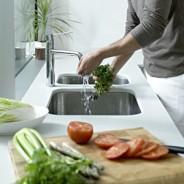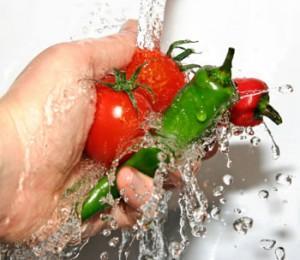
There are strict regulations which control the conventional of food. These cope with the production, distribution and purchasers, ensuring that the food is protected for us to buy. This will make it our responsibility to select, store, handle and make preparations food in a safe and hygienic method to keep it safe for the family and friends to enjoy.
It’s thought that many food poisoning cases originate within our own homes with some basic knowledge of safeguards, the numbers of cases might be substantially reduced. This module will show you some basic rules to follow along with when you are preparing food, to help keep it safe to consume. It will also answer some questions regarding food poisoning – the way it can happen, what causes it and the way to recognize the symptoms. It’s good to know that all types of food poisoning are preventable by understanding what the causes are then you definitely, as the cook, knows how to produce safe food.
Food Handling and Kitchen Hygiene
However carefully you decide on your food, you must remember to keep it and handle it hygienically in your own home. Your kitchen and storage areas ought to be kept scrupulously clean. This doesn’t been they have to be sterile, some bacteria are everywhere. So many people are concerned that we are residing in a too clean environment. However there’s a balance to be reached where you are dealing with food, it has to be agreed that the good level of cleanliness will assist you to prevent a case of food poisoning. Modern kitchens and also the materials used have helped to make cleaning much easier of computer used to be, but cleaning continues to have to be done.
Cleaning Checklist
Always clean your worktops before preparing food. Clean your worktops thoroughly once you have prepared food, particularly if you have used raw meat, poultry, fish or unwashed vegetables. Dishwashers really are a very effective way of disinfecting dishes, utensils and you should find that most chopping boards could be washed this way. Dishcloths could be a perfect place for bacteria to multiply, consider getting into the habit of cleaning them often, then rinsing in hot water, squeezing them dry, then letting them air dry. Don’t leave these questions damp bundle around the sink. Disposable kitchen towels are extremely useful and can be accustomed to dry down surfaces which have been cleaned, then just toss the paper away. Tea towels can harbour bacteria if permitted to be stored in a moist state. There will be little requirement for them if you rinse your dishes in hot water and allow them to air dry. Help you stay hands clean, they’re an effective way of creating bacteria from one food to a different.
Maintaining Food Hygiene

Kitchen Hygiene and Food Safety
Food hygiene is a broad term which is often used to describe the preparation and preservation of foods in a fashion that ensures the food is protected for consumption. If sanitary the weather is not maintained or maybe food is prepared by individuals who maintain poor personal hygiene, then your food could get contaminated and may spread diseases like salmonella and Methicillin-resistant Staphylococcus aureus (MRSA). Proper food hygiene will help protect communities and families from contracting these deadly diseases. Practicing food hygiene shouldn’t be limited to just the food/hospitality industry, but must be applied in our homes too.
Tips for maintaining food hygiene
Wash your hands well with soap and water pre and post handling food. Clean worktops with hot soapy water and rinse well, utensils and equipment like cutting boards, knives, ladles to prevent cross-contamination. Wash fruits and vegetables well in flowing fresh water to get rid of surface dirt and bacteria. You may also scrub it having a vegetable brush as needed. This helps prevent dirt and germs from entering food when sliced having a knife.
Maintain personal hygiene and steer clear of touching or picking body parts or areas while preparing food. Use fresh dish cloths and hand towels daily .Wash after use and store as dry as you possibly can Avoid tasting food with similar ladle directly from the pot. This practice may contaminate the food and introduce microorganisms contained in your mouth/saliva.
Food Poisoning
Food poisoning is an extremely unpleasant illness that the main symptoms are stomach pain, vomiting and diarrhea. It always occurs between 1 and 36 hours of eating the contaminated or poisonous food and also the illness usually lasts between One day and a week. In some instances the illness can cause permanent disability or can also be fatal, particularly to people groups of people that are recognized to be vulnerable i.e. seniors, the very young, pregnant or nursing mothers or those people who are already ill or might be immune deficient.
Food Poisoning Causes
Bacteria or their poisons
Viruses
Metals
Chemicals
Poisonous plants
Remember, food poisoning doesn’t just happen – it’s caused – and this is because of something going wrong within the chain of events prior to the food is eaten. It’s thought that many food poisoning incidents exist in people’s own homes, as was mentioned earlier. Food poisoning caused by bacteria is most typical. Foods which have been contaminated by these harmful pathogens look, smell and taste really common. One of the main reasons for food poisoning may be the storage of high-risk foods at 70 degrees for too long e.g. sandwiches composed in advance and not chilled.
